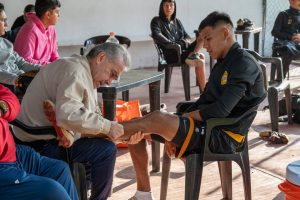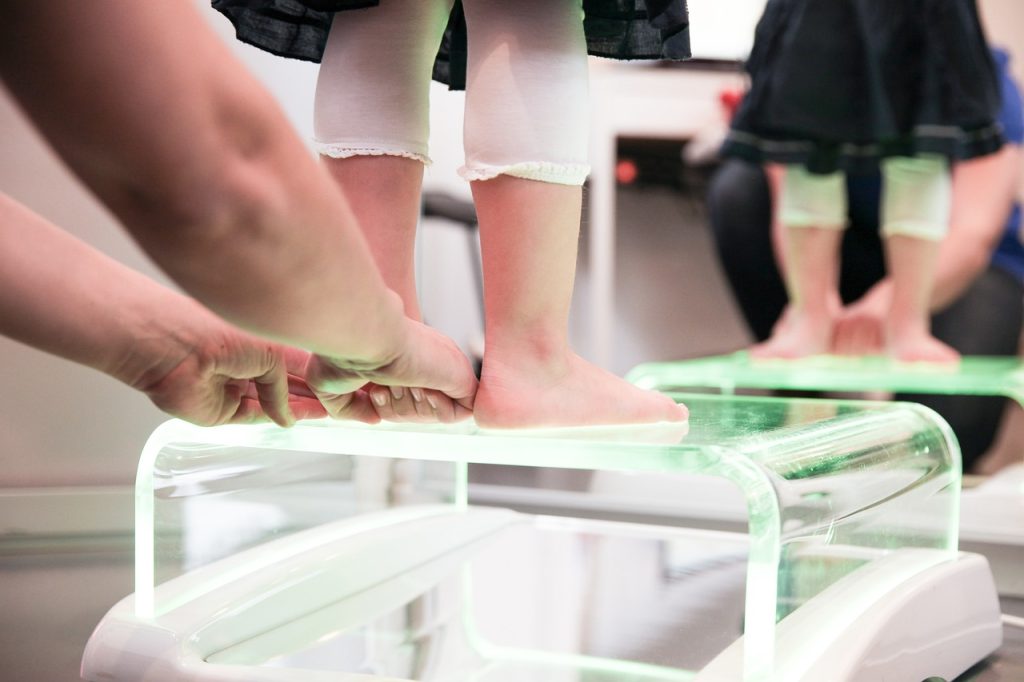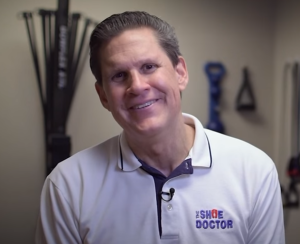3D foot mapping is a technique that leverages digital scans to capture your feet’s complete anatomy in fine detail. You receive a map with detailed information about your arch, pressure points, and foot size. It assists in creating orthotics that match you far better than basic foot molds or manual casts. With 3D foot mapping, your orthotics correspond to your foot’s shape and biomechanics, not just your length or width. Experience fewer fit issues, greater comfort, and enhanced support with every step. This post explains how 3D foot mapping works and details the benefits it brings in getting the optimal fit and support from your orthotics.
Key Takeaways
- Now, 3D foot mapping enables you to create more precise and comfortable orthotics through precise digital scans of your foot’s shape and movement.
- Non-invasive 3D foot scanners collect this data rapidly, enabling the creation of custom orthotics that are more precise and effectively tailored to your needs.
- By using real-time dynamic assessments, you benefit from orthotics designed for your daily activities or athletic performance.
- It permits clinicians to follow your progression, adjusting treatments as needed to optimize outcomes.
- Cutting-edge 3D mapping removes the unpleasant and imprecise plaster or foam-based techniques and provides a faster, more comfortable patient visit.
- Whether you’re an athlete, suffer from chronic foot conditions, or just looking for everyday comfort, you receive long-term support and enhanced foot health via personalized solutions.

What Is 3D Foot Mapping?
3D foot mapping is an exact method of recording the complete contour of your foot using advanced 3D foot scanning technology. It captures crucial data such as your foot’s length, width, and arch height, which are essential for creating custom orthotic devices that fit you properly. This non-invasive scanning process ensures you receive precise foot measurements quickly, without any pain or hassle. With this approach, personalized foot care can be tailored to your individual foot contours, allowing you to receive enhanced support and comfort in your everyday activities.
The Technology
The 3D foot scanners utilize high-resolution cameras or laser sensors to scan your foot from all angles, creating a detailed 3D model that highlights every curve, lump, and pressure point. These advanced 3D foot scanning technologies also track weight distribution across your foot, which helps identify areas needing additional support. In comparison to archaic methods like plaster casting or manual measurement, 3D foot scanners are more efficient and significantly reduce the risk of inaccuracies. The accompanying software analyzes the data, ensuring you receive a true custom orthotic fit for your footwear or orthotic devices.
The Process
- You simply step onto the scanner platform, barefoot or in a thin sock.
- The technician verifies your foot alignment.
- The scanner moves about your foot, recording its contours, dimensions, and your weight distribution.
- The system creates a digital foot model in seconds.
This system, utilizing advanced 3D foot scanning technology, can monitor your foot’s movement in real time, providing a comprehensive view of how your foot functions under load or while moving. If your foot is positioned well, the 3D scan will capture your actual foot shape, ensuring that custom orthotic devices fit perfectly. Today’s foot scanners are easy to operate, making the scan process effortless for you and your podiatrist.
The Data
Your scan, utilizing advanced 3d foot scanning technology, provides a blend of metrics, such as foot length, width, arch height, and pressure points. All this data is fed into a digital foot mold, which is used to create custom orthotics that fit your specific anatomy. Accurate information helps identify foot issues and design treatment that suits you. If follow-ups are required, your foot scans can be saved and reviewed as you go to monitor progress or adjust your therapy.
How 3D Mapping Improves Orthotics
How 3D Mapping Changes Orthotics.. It adds more detail, speed, and control to each step of the process. That means better fit, better comfort, and less waiting. The table below shows how 3D mapping stacks up against traditional methods:
|
Feature/Benefit |
3D Mapping |
Traditional Methods |
|
Accuracy |
Within 2 mm of true measurement |
Prone to manual error |
|
Fit |
Custom, precise fit |
Often generic or less accurate |
|
Time & Cost |
3D scan: €2.25–6.80; fast |
Higher cost; slower |
| Data Storage & Sharing | Digital, instant | Physical, slow | | Production Time | Days using 3D printing | Weeks | | Dynamic Gait Analysis | Potential limited availability | Unavailable |
1. Unmatched Precision
3D mapping provides you with a scan of your foot that’s hard to top. It takes in the entire surface, shape, and every contour immediately. No more guesswork or imprints that shift if you wiggle. This means orthotics fit better, relieve pain, and nip issues in the bud.
Traditional casting can introduce errors. If the foot moves or the cast is not set properly, the orthotic won’t fit. With 3D mapping, these problems disappear. Precision is what counts if you suffer from foot pain, diabetes, or other medical conditions.
2. Dynamic Capture
Dynamic 3D scans can capture your foot as you walk, run, or stand. This lets you visualize how your foot actually moves, not just when you’re standing, but during real-life motion.
You receive a complete mapping of your gait and pressure points. For athletes, it means orthotics can align with your sport and enhance your performance. For daily life, it seeks out hazards such as areas prone to ulcers, allowing you to take preventative action.
3. Material Synergy
With crisp 3D data, you can select materials to fit your own requirements. Harder in one place and softer in another. 3D printing allows you to blend these in a single unit.
The connection between your foot’s shape and the appropriate material translates to a surge in comfort and support. New materials make your orthotic last longer.
4. Total Customization
3D mapping allows you to obtain an orthotic designed to fit your feet, not just some feet. You can swap out the design if you’re hurting or need more support.
This sort of custom work assists with flat feet, high arches, or aches from standing all day. It moves you while moving your life forward.
5. Verifiable Results
Each scan is stored, allowing you and your clinician to monitor any changes over time. You see what is working and what is not.
If you require a new orthotic, modifications are done quickly. You receive data, not estimations. This maintains confidence and assists you in achieving optimal outcomes.
Traditional vs. Modern Methods
Orthotic measurement methods have evolved significantly, transitioning from messy and slow techniques to advanced 3D foot scanning technology. The selection of your method could greatly impact comfort, fit, and the effectiveness of your custom orthotic devices. Understanding the divergence between traditional methods and modern innovations like 3D foot scanning allows you to appreciate what makes this technology the future of personalized foot care.
- Old school methods are manual-based, which may result in variability.
- Modern 3D mapping provides exact, repeatable data with less human error.
- Plaster and foam impressions take longer and are less convenient.
- Digital scanning provides fast, non-invasive results and simple data sharing.
- 3D scanning takes more detailed measurements and optimizes fit and support.
Plaster Casting
Plaster casting has long been a traditional method for obtaining a mold of your foot, serving as the foundation for a custom orthotic. However, this process is slow and can be messy, requiring patients to spend more time in the clinic. With the advent of 3D foot scanning technology, the efficiency of foot assessments has significantly improved. This modern approach eliminates the need for drying time, ensuring that the results are more accurate and replicable.
While plaster molds can be cumbersome and uncomfortable, 3D foot scanning offers a more streamlined experience. Small shifts during the plastering process can lead to an inaccurate outline, but with a 3D foot scanner, these concerns are largely mitigated. Patients can receive personalized foot care without the discomfort associated with traditional methods.
Ultimately, the integration of 3D scanning technologies in podiatry practices enhances the quality of orthotic devices. By utilizing 3D foot scanning, practitioners can provide prescription orthotics that are tailored to the unique foot morphology of each patient, ensuring better outcomes and satisfaction.
Foam Impressions
Foam impression boxes are typical in clinics. You step on a soft foam block, which holds the mold of your foot. It is less messy than plaster and not as time-consuming. This is why it is popular for fitting simple orthotics.
Foam impressions aren’t as fine-detailed as a digital scan. The depth and width are different depending on how hard you press or how evenly you stand. This can leave results uneven. You might receive orthotics that aren’t quite as customized as you would prefer.
Certain measurements, such as the arch or ball of the foot, are difficult to represent with foam. Movements of your stance can alter the outcome. Digital scanning addresses these concerns. It detects subtle variations in contour and provides improved and more reliable information for orthotic development.
Digital Scanning
Digitally scanned with high-tech sensors to outline your foot’s contours. It measures things like ball of foot length and foot breadth, horizontal, with great accuracy. Our studies demonstrate digital scans with mean absolute differences of 0.73 to 1.50 mm, outperforming traditional hospital and clinic tools.
You receive immediate results, enabling your provider to make decisions more quickly. The comfortable, non-invasive scan is simple to duplicate. Measurement errors are lower, so the final orthotic fits closer to your natural foot shape.
All over the world, in clinics, more and more clinicians are transitioning to digital scanning. The technology provides a more tailored fit, which frequently results in enhanced comfort with fewer attempts. Both methods were accurate to within 5 mm. Digital scans were more accurate for nearly every foot feature, except for a few, such as heel breadth.
The Patient Experience
3D foot mapping for the discerning orthotic seeker utilizes advanced 3D foot scanning technology. It optimizes how your foot is measured and scanned, making the process faster, more comfortable, and much more accurate than traditional casting. This digital scan enhances the fit and effectiveness of your custom orthotic.
- Patient journey steps: * Get informed about the scan and its advantages.
- Get ready – we’ll have you take off your shoes and talk through some concerns.
- Get dosed with the 3D scan.
- Analyze live scan data together with a specialist.
- Await your analysis and customized orthotic suggestions.
- Come in for a follow-up to check fit and comfort.
Before The Scan
You receive a complete explanation of the scan and how it benefits your foot health. This is important because knowing what to expect can calm any concerns and demonstrate how 3D scanning creates a superior fit for your orthotics or footwear. They’ll inform you which shoes to wear or if you should bring a pair, so your scan results can be as accurate as possible.
You’ll have to lose your socks and shoes. This step is easy, but crucial, as even tiny wrinkles or seams can distort the scan and impact the results. Before it all begins, you have a voice to address any concerns or questions. This allows you to discuss any sensitivities or prior concerns, making the scan safer and more personalized.
During The Scan
3D foot mapping occurs in a soothing environment, usually a clinic or shop. The scanner looks like a small platform or camera, which uses harmless lasers or light to map your feet in detail.
It’s fast, usually less than a minute, and painless, so sit back. Others with sensitive soles might experience a slight pressing sensation but seldom discomfort. You watch your foot data appear on a screen during the scan. This allows both you and the specialist to identify trouble spots immediately.
No messy plaster or waiting for molds to dry. You just stand as directed, and the scan takes exact measurements. This is a non-invasive approach, so you skip the pain of casting.
After The Scan
Once your scan is complete, the information is sent directly to the design team. It can even be emailed, so it will save you time and effort. You get orthotics or shoes from your specific foot shape, not a generic casting.
Then you meet with your care provider to review the results and receive customized recommendations. Follow-up visits are scheduled to ensure your orthotics fit and function properly. Your input is crucial. If something doesn’t feel right, tweaks can be implemented quickly.
Continued care gets you adjusted, and your orthotist gains insight to improve the next patient’s journey.

Beyond The Digital Blueprint
3D foot mapping isn’t just a digital scan; it utilizes advanced 3D foot scanning technology to bridge the gap from stationary footprints to actual clinical insight, despite the absence of true dynamic scans during gait. The information you receive can correlate your foot’s profile to age, weight, and even gender, enhancing your foot assessment and providing a more comprehensive understanding of your biomechanics.
Clinician Interpretation
A podiatrist, orthotist, or other specialist takes your 3D foot scan and analyzes it for patterns. They observe whether your foot is flat, resilient, or fine and correlate that with your gait or fitness requirements. For example, research indicates flat feet could relate to age or weight, which allows your doctor to detect dangers ahead of time.
Your clinician’s expertise counts for a lot. They mix your scan’s numbers with what they understand about anatomy, injury, and movement. This allows them to catch problems that a scan alone might overlook. In collaboration with your specialist, you can discuss your objectives, such as pain relief or increased balance, and ensure the result is tailored to your actual requirements.
Custom orthotics begin with this collaboration. Your scan helps shape the device, and your feedback and your clinician’s eye for detail ensure the fit is perfect. It’s a hands-on process, with your input molding every step.
Manufacturing Integration
3D mapping data feeds directly into the workflow at the orthotic lab. The digital file supersedes the need for a plaster cast, which used to run about €20 to €34 per foot. Now, a scan can streamline the timeline and reduce waste.
The data enables machines to sculpt or print orthotics that conform to your foot’s actual shape. That translates to less experimentation and more coziness. You receive your orthotics more quickly as automation accelerates delivery. Labs and clinicians keep in touch to verify quality, so you don’t just receive a quick outcome. You receive a quality one.
The accuracy is greater than with traditional methods. Research finds 3D scanning is as good or better than traditional methods. It performs equally well whether your scan is indirect or from a cast.
Future Potential
Tech does not let up. Before long, pocket 3D scanners could bring foot mapping into clinics or even the home for ease of use. AI might identify patterns in your foot scan that recommend more effective adjustments to orthotic design.
As people get scanned, the data benefits all. Researchers can cluster foot shapes, monitor deformation under load, and continue refining designs. The entire space continues to expand as tools become more intelligent and accessible to users.
Who Benefits Most?
While 3D foot scanning technology and custom orthotic devices can assist a large number of people, certain groups experience the most benefit. This tech utilizes in-depth foot assessments to gauge your foot shape, arch, and pressure points. In other words, your orthotics or shoes can be tailored precisely to your foot, regardless of where you live or what type of feet you have.
Athletes
When you’re in the game, every mile counts. 3D foot mapping helps you identify minor quirks in your foot architecture quickly, such as high arches, flat feet, or subtle misalignments. This detail empowers you and your coach to select the correct equipment or make minor adjustments that can translate into improved performance.
Custom orthotics, crafted from your foot’s 3D scan, can give you more grip, better balance, and reduce shock when you run or jump. Small tweaks can help you move faster or reduce soreness after workouts. Many pro athletes are now using these scans to gain an edge and stay healthy.
Injury prevention is paramount. By leveraging 3D scans, you can identify where you exerted excess pressure and adjust before it becomes painful or results in injury. Whether you’re running, kicking, or jumping, shoes or inserts that fit your feet can reduce your risk of sprains or stress fractures.
Chronic Conditions
If you suffer from chronic foot pain or an ailment such as plantar fasciitis, arthritis, or flat feet, 3D foot mapping provides you with a direct path to relief. These scans assist physicians in detecting minor injuries that may not present in standard testing. For diabetics or those with bad circulation, these early steps count because these scans can identify minor troubles before they become major.
Custom orthotics formed from your scan can relieve pain and make you walk more efficiently. This holds equally for children and the elderly. For women who tend to have a higher arch or narrow heels, 3-D mapping can address fit problems that off-the-shelf options overlook. Podiatrists use this information to design inserts or shoes that work with your body, not against it.
Daily Comfort
You don’t have to have a medical condition to crave comfort. 3D foot mapping works for anyone who wants to walk, stand, or move with less strain. A good fit prevents blisters, sore spots, or tired feet by distributing your weight.
Custom orthotics could simplify walking the block, standing at work, or chasing the kids. An investment in your own foot care can actually pay off in the long run by avoiding injuries and keeping your feet in good shape as you age.
Conclusion
3D foot mapping provides you with an actual printout of your feet, including every line and contour. It allows you to get orthotics that fit your feet, not just one foot. With this tech, you enjoy more comfort and better support from day one. We can scan your feet in our clinics and adjust what matters to you. Flat feet, high arches, or suffering from 12-hour shifts, these are a literal lifesaver. Athletes and seniors experience the lift as well. You receive scans that provide tangible steps to improved foot health. Ready to experience what precision fit can do for you? Schedule a scan and experience the difference!
Frequently Asked Questions
What is 3D foot mapping?
3D foot mapping involves digitally scanning your feet using advanced 3D foot scanner technology. It crafts a detailed, three-dimensional representation that captures each curve and point of pressure, allowing specialists to assess your unique foot structure.
How does 3D foot mapping improve orthotic precision?
3D foot scanning technology provides exact measurements of your feet, ensuring that custom orthotic devices fit you more perfectly and offer better support and comfort than previous methods.
Is 3D foot mapping safe and non-invasive?
3D foot mapping utilizes 3D foot scanning technology, ensuring a completely safe and non-invasive process. It employs light or scanning sensors, causing no pain or discomfort during the foot assessment.
How is 3D mapping different from traditional foot measurement?
Old school methods utilize molds or simple measurements, which may not be as precise. However, 3D foot scanning technology takes detailed digital measurements of your feet, ensuring a more exact fit for your custom orthotic devices.
Who benefits most from 3D foot mapping?
Anyone requiring custom orthotic devices – individuals with foot pain, athletes, or those with unusual foot morphology – can profit from 3D foot scanning technology that improves orthotic precision.
How long does a 3D foot mapping scan take?
A typical 3D foot scanning process requires just minutes, allowing for precise foot assessments to be rapidly performed during a standard appointment.
Can 3D foot mapping help prevent foot problems?
By utilizing 3D foot scanning technology to capture a precise fit, you can avoid common problems like discomfort, blisters, or subpar support, ultimately improving your foot health.
Struggling With Foot, Back, or Knee Pain? Find Answers With 3D Foot Mapping at The Shoe Doctor.
If you deal with constant back or knee pain, your feet could be the real source of the problem. Even small misalignments in your foot structure can throw off your entire body’s balance, putting strain on your joints and muscles. At The Shoe Doctor, we use advanced 3D foot mapping to pinpoint these imbalances with incredible precision.
Our detailed foot-mapping process captures how you stand, move, and distribute pressure, allowing us to create truly custom orthotics that correct alignment, relieve pressure points, and restore natural movement. With more than 20 years of experience, Russell combines cutting-edge technology with expert craftsmanship to design orthotics that do more than add comfort—they help prevent pain from returning.
Through our partnership with the Spine & Injury Medical Center in San Jose, we take a full-body approach to relief, ensuring your posture, gait, and foot mechanics all work together for lasting results.
If you’re in the South Bay Area, book your free consultation today. Let The Shoe Doctor use 3D foot mapping to help you move comfortably and confidently again.
Disclaimer
The materials available on this website are for informational and entertainment purposes only and are not intended to provide medical advice. You should contact your doctor for advice concerning any particular issue or problem. You should not act or refrain from acting based on any content included in this site without seeking medical or other professional advice. The information presented on this website may not reflect the most current medical developments. No action should be taken in reliance on the information contained on this website, and we disclaim all liability for actions taken or not taken based on any or all of the contents of this site to the fullest extent permitted by law.


